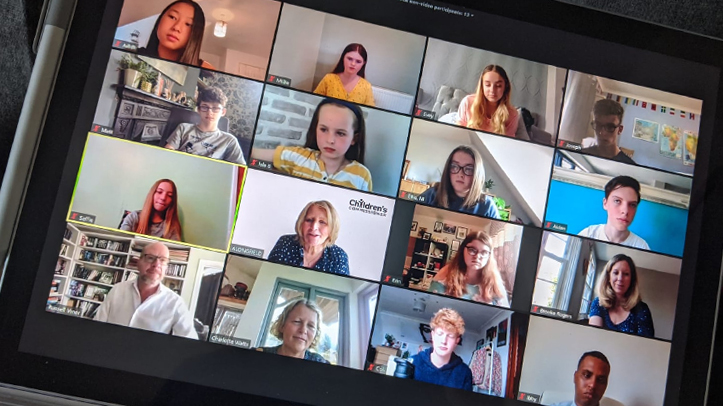
During a virtual event on the 11th of August, 12 children from across the UK had the opportunity to ask their own Covid-19 related questions covering different topic areas, such as social bubbles, face masks and public transport, which were answered by three government scientists, Professor Brooke Rogers, Professor Charlotte Watts and Professor Russell Viner. The event was organised together with the UK Children’s Commissioners’ offices and the Scientific Advisory Group for Emergencies (SAGE), and was chaired by the Children’s Commissioner for England.
Listen back to the event below
We received far more questions than we were able to answer on the day and so the government scientists have been kind enough to answer some of the remaining questions in their spare time, which you can read the answers for below.
Q: How does the age of children affect our ability to carry the virus? Girl, 14
A: From a behavioural perspective we would consider the ability of children to transmit the virus rather than carry it. In terms of transmission, very young children are less able to engage in protective health behaviours such as social distancing, avoiding face touching, effective hand hygiene, and more. Older children are able to understand and follow the health advice. However, there are concerns that older children have wider networks so infection may have further to travel if transmitted by an older child.
Q: Once Covid is no longer a pandemic will scientists still do research and studies on it or will it not really matter any more? Girl, 17
A: Pandemics will always matter. Pandemic Influenza has been at the top of the public-facing National Risk Register in respect to its potential likelihood of occurring the in the next 5 years and the impacts that it can have on society. The National Risk Register informs research, policy, planning, and response. Many of the things that we have learned during the Covid-19 response will inform the ways in which we prepare for and respond for future pandemics.
Q: Are you going to produce information about the science and how it relates to the advice for those with special educational needs and disabilities? Young male, 22
A: This is an excellent question. Populations who are potentially more vulnerable are an important part of emergency planning and response. They are an important part of research, too. Vulnerable populations can be more difficult to study due to more stringent ethical approval processes and the need to put additional safeguarding protocols in place. This does not mean that we cannot and do not study more vulnerable populations. For example, work being conducted by an NIHR Health Protection Research Unit in Emergency Preparedness and Response focuses some of its work on vulnerable populations (e.g. the elderly, children). They have new projects planned to investigate disaster education and communication in schools, and communicating with hard to reach populations during extreme events. Your question has the potential to focus part of the disaster education work on SEND students.
Q: Why do you keep talking about Coronavirus so much? Girl, 8
A: Covid-19 has the potential to change society as we know it. The medical response to Covid-19 is already transforming the scientific landscape. We also know that public behaviour has the potential to increase or decrease the transmission of the virus. As a result, public behaviour is one of our most important ‘tools’ for preventing the risk of infection in order to give the physical and medical sciences time to identify and create solutions for limiting environmental spread and preventing or treating infections. As such, communication is one of our most powerful tools for limiting the spread of infection at the moment.
Q: What safe practices are most important for returning to school? Young person, 16
A: Following the guidance not to attend if you are symptomatic, appropriate physical distancing where possible (though this varies by age group in schools), good hand and cough hygiene, following processes and protocols that have been put in place to decrease contact (e.g. one-way systems), good ventilation, sticking to your bubble, and being mindful of interactions beyond your bubble. Effective communication between teachers, staff and parents, and between the schools and the testing services is also incredibly important.






